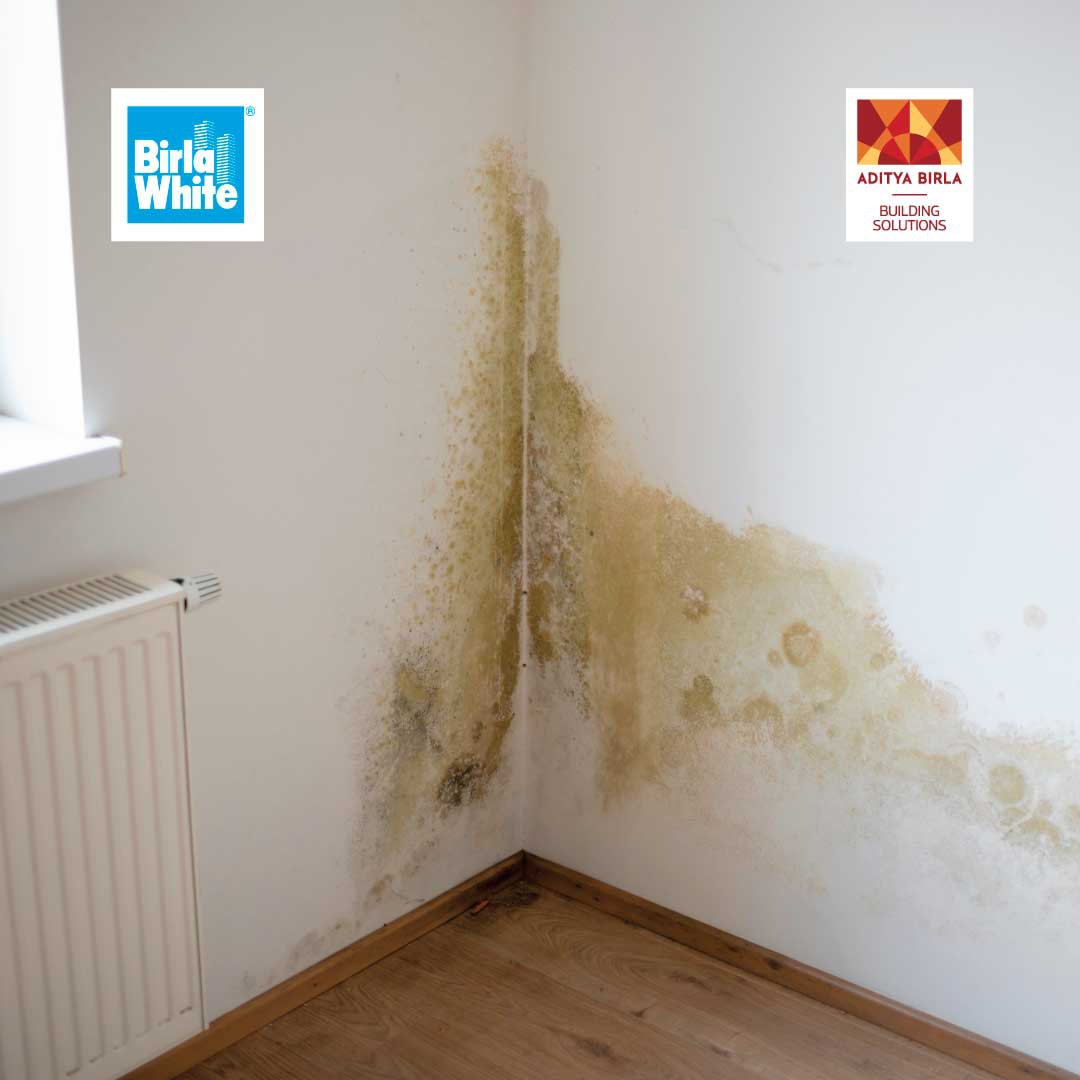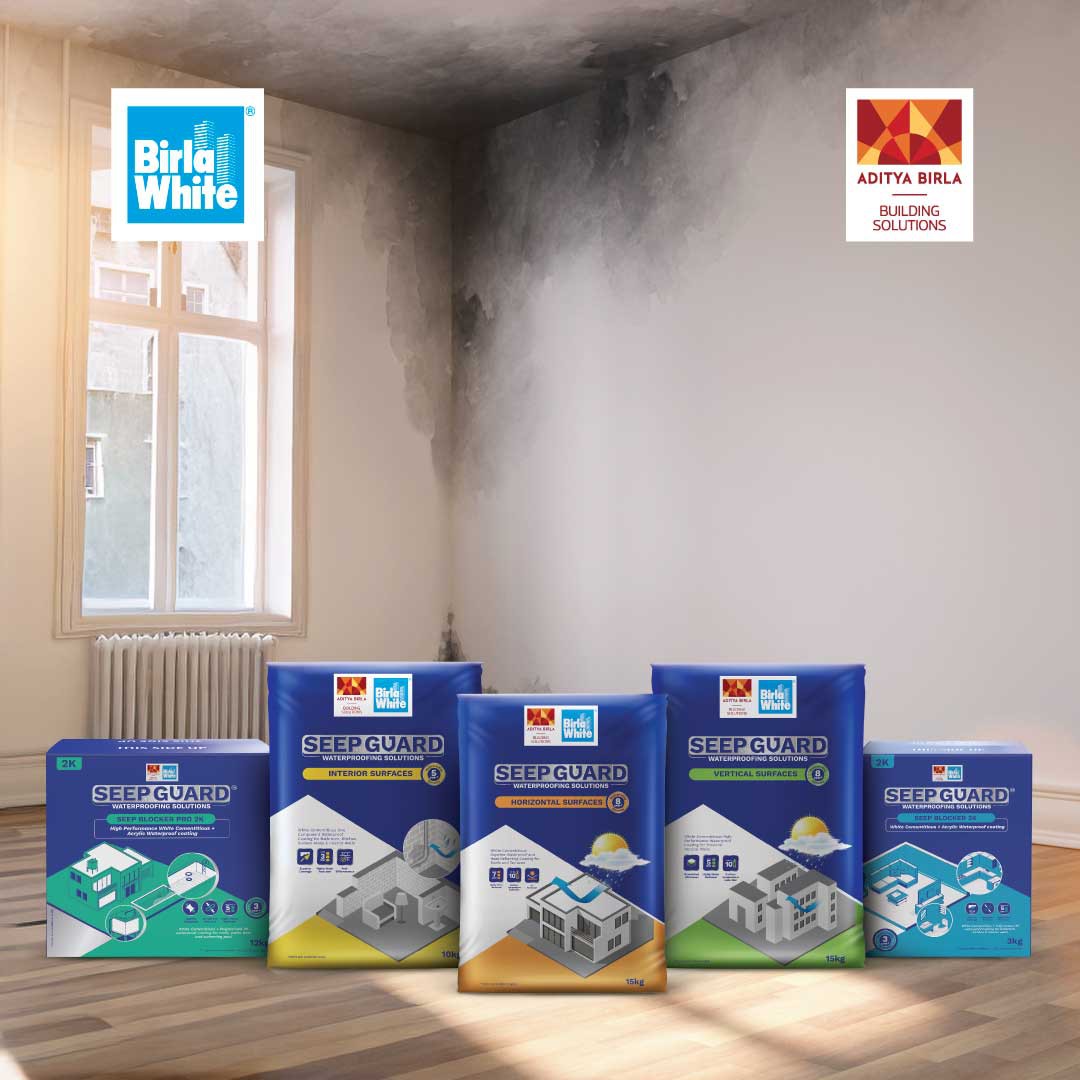
Loading
Over time, have you noticed your walls beginning to crumble, become powdery, or develop unsightly patches? If you’re frustrated by the constant reappearance of such damage even after frequent repairs and fresh paint, you’re not alone—and it’s a clear sign of underlying moisture issues within your walls. Let’s dig deep into why this happens, and how modern solutions like white cement waterproofing—especially using scientifically advanced products such as Birla White’s Seep Guard Interior Surfaces—can provide robust protection for your home.
Why Do Walls Crumble and Turn Powdery?
The crumbling and powdery appearance you see is typically the result of a process called efflorescence. This occurs when water infiltrates your wall—from leaks, condensation, or capillary rise from the ground—dissolving soluble salts present in building materials (such as cement, sand, or bricks). As the water migrates to the wall’s surface, it evaporates, leaving the dissolved salts behind in the form of white, powdery deposits. Over time, this isn’t just an eyesore—it degrades your wall's integrity, causing the underlying masonry to loosen, crack, and, ultimately, crumble.
The Reasons Behind Efflorescence

· Water Ingress: Walls naturally absorb moisture from sources like rain, leaks, kitchen or bathroom water usage, or even groundwater moving up through porous structures (capillary action).
· Dissolution of Salts: Salts are naturally present in sand, cement, bricks, and water used in construction. Water, acting as a solvent, dissolves these salts within the wall.
· Migration: The water containing dissolved salts migrates to the wall’s surface, drawn by differences in moisture content and temperature, particularly when heating effects create evaporation on the inner wall.
· Evaporation and Crystallization: When this water reaches the wall's surface and evaporates, salts are left behind as crystalline deposits—these are the infamous whitish powdery streaks you see on affected walls.
· Accumulation and Damage: Over months or years, repeated cycles of wetting and drying deposit more salts. The expanding salt crystals within the pores of the wall exert pressure, leading to flaking, spalling, and deepening cracks.
This isn’t just a cosmetic issue. Efflorescence often signals ongoing moisture movement within the wall, which can promote fungal growth, weaken adhesion of paint or plaster, and accelerate overall wall decay.
How Seep Guard Interior Surfaces Prevents Wall Damage

The key to stopping efflorescence—and its symptoms, from crumbling to powdery walls—is blocking water ingress and salt migration at the source. That’s where modern waterproofing and dampproofing solutions come in, and Seep Guard Interior Surfaces stands out as a high-performance choice for interior applications.
The Science-Backed Edge: Anti-Efflorescence by Design
Seep Guard Interior Surfaces is a polymer-modified, white cement waterproofing chemical engineered for both waterproofing and dampproofing. Here’s why it works so effectively:
· Superior Waterproof Integrity: By forming a seamless, highly elastomeric coating, Seep Guard effectively seals the pore structure of masonry and concrete, blocking both liquid water and vapor transmission. This prevents water from entering and eliminates the primary driver for salt transport and efflorescence.
· Advanced Crack-Bridging Technology: Thanks to German-origin elastomeric polymers, the coating remains flexible enough to bridge and cover hairline cracks (up to 1.28mm), accommodating thermal movement and building settling without losing its seal.
· Ultra-Strong Adhesion: White cement chemistry ensures very high adhesion with underlying masonry and concrete. This prevents the common problem of paint or plaster delamination caused by trapped salts and moisture.
· Anti-Efflorescence Capability: Because the product’s dense, polymer-enhanced matrix blocks both moisture and dissolved salts, efflorescence is stopped before it can form on the visible surfaces of your walls. Birla White’s in-house testing shows no color change and excellent resistance across typical problem areas.leaflet-interior-surfaces.pdf
· Long-lasting Warranty: With a 5-year waterproofing assurance, you get proven results that last.
Additional Benefits: More Than Just Waterproofing
· Algae & Fungi Resistance: Blocking moisture also means you’re protected from the microbial growth that thrives in damp walls, keeping interiors cleaner and healthier.
· Zero VOC Formula: The product’s eco-friendly formulation ensures no harmful emissions during or after application—a boon for indoor air quality.
· Thermal Comfort: By reducing the surface temperature of interior walls (by about 5-7°C at noon), treated walls stay cooler and more comfortable during peak heat.
The White Cement Advantage
Birla White Seep Guard for horizontal and vertical surfaces stands apart because it combines cutting-edge waterproofing with the remarkable strengths of white cement technology. This innovative solution offers superior adhesion, seamlessly bonding with plaster to create a durable, long-lasting finish that won’t peel or flake away like standard acrylic waterproofing.
Where and How to Use Seep Guard Interior Surfaces
This white cement waterproofing solution is suitable for a wide range of interior locations—bathrooms, kitchens, sunken areas, water tanks, bedrooms, or living rooms—whether you’re treating positive water pressure (from inside) or negative (from outside or adjoining wet areas).
Going Beyond Conventional Dampproofing
Unlike ordinary paints or generic sealants, modern waterproofing and dampproofing chemicals like Seep Guard Interior Surfaces don’t just superficially cover up damage. Instead, they address root causes—moisture ingress and salt transport—providing scientific, structural protection against efflorescence and wall crumbling.
If you want durable, beautiful, and healthy interior walls, make white cement waterproofing an essential part of your home maintenance plan. With the right waterproofing chemical, you can say goodbye to powdery, crumbling walls and enjoy peace of mind every season.
For more, visit https://www.birlawhite.com/en/waterproofing-solutions/seep-guard-interior-surfaces now.